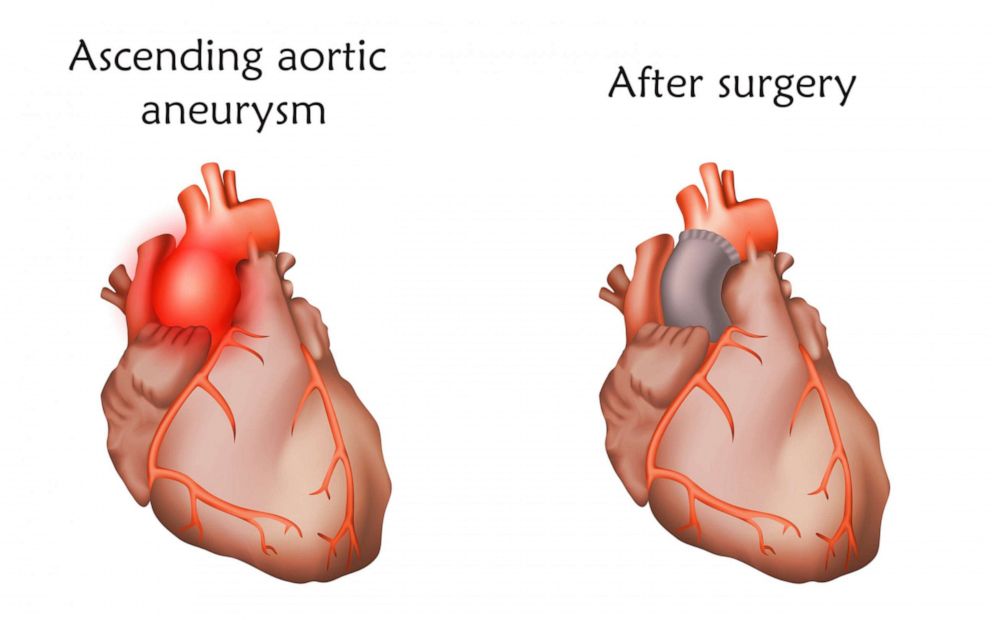What to know about ascending aortic aneurysm after Grant Wahl's sudden death
The beloved soccer writer died from the rare condition, his wife revealed.

A ruptured ascending aortic aneurysm -- the reported cause of death of American soccer writer Grant Wahl -- is a rare but deadly medical condition.
Wahl, 49, a prominent journalist in the U.S. soccer community, collapsed on Dec. 9 while covering the World Cup in Qatar and could not be revived. On Wednesday, his wife, Dr. Celine Gounder, revealed that Wahl's unexpected death was due to the rupture of an undetected ascending aortic aneurysm with hemopericardium, following an autopsy performed by the New York City Medical Examiner's Office.
"Grant died from the rupture of a slowly growing, undetected ascending aortic aneurysm with hemopericardium," Gounder wrote in a post on Substack. "No amount of CPR or shocks would have saved him."
When someone who is young and otherwise appears to be healthy dies suddenly, "we worry about the possibility of underlying health conditions," Dr. Eric Isselbacher, the co-director of the Thoracic Aortic Center at Massachusetts General Hospital, told ABC News.
"There's no good way to know, in a case like this, until the autopsy exactly what happened. But we do see things like this happening in young people and it's a sobering reminder of aortic aneurysms, particularly when people don't know about them, because it can cause rupture and death," he said.
What is an aortic aneurysm?
The aorta is the main artery that carries blood away from the heart to the rest of the body and brain. An aortic aneurysm is a balloon-like bulge in the aorta. An aneurysm weakens that portion of the artery, allowing blood to dissect or separate its walls and can cause it to rupture. An ascending aortic aneurysm is one where there is bulging and weakening of a section of the aorta before it curves into the aortic arch.
Hemopericardium means that there was blood found in the tissue surrounding the heart that is most likely related to the aortic aneurysm. If enough blood gets in this tissue around the heart, it can prevent the heart from pumping properly.
Doctors say aortic aneurysms that develop slowly over time, like Wahl's, may not have any related symptoms until it gets large, dissects or ruptures. If an aneurysm dissects or ruptures, someone may feel sharp chest pain, have trouble breathing, become confused or pass out.
It is reported that Wahl was recently experiencing some cold symptoms and was treated for bronchitis.
"The chest pressure he experienced shortly before his death may have represented the initial. symptoms," Gounder also wrote.
Doctors say it is possible that some symptoms of a growing aortic aneurysm could mimic symptoms of a respiratory infection like cough or chest discomfort, but it is not known if that is what happened in Wahl's case.
It is also unlikely that an automated external defibrillator would have saved Wahl's life during the medical emergency; only surgery can repair a ruptured aortic aneurysm.
Who is at risk?
This condition is rare. There is no routine screening test recommended for an ascending aortic aneurysm. While it is unclear exactly how many people have this condition, one recent study estimated the prevalence of thoracic aortic aneurysms, including the ascending type, is around 0.16% of the population.
Nearly 10,000 people died from aortic aneurysms or aortic dissections in 2019, reported the U.S. Centers for Disease Control and Prevention.
Abdominal aortic aneurysms, located in a lower section of the aorta, have "very clear risk factors" -- tending to occur in people in their late 60s and 70s, in smokers and people with high blood pressure or high cholesterol, Isselbacher said. Aneurysms that are in the chest, such as an ascending aortic aneurysm, however, are generally not due to those typical risk factors and tend to be due to an abnormality of the aorta from birth or inherited conditions, he said.
"The problem with those is because they don't have the typical risk factors, people don't know if they might have them or not," he said. "But there are a few clues that you're at risk for them."
For Isselbacher, it's important for people to know their family history, including if there is a relative with heart rhythm issues or one who died at a young age from sudden death, and if you have a bicuspid aortic valve, as that could go along with an enlarged aorta, he said.
"Because if you can catch that, you can do something about it," he said.
Though the "vast majority" of patients with aortic aneurysms detect them incidentally from an imaging study ordered for another reason, he said.
"They had a cough, so they got a chest X-ray. They were smokers, so they got a lung cancer screening CT scan. They had some palpitations, they got an echocardiogram. And then those studies, incidentally, show the enlarged aorta," he said.
According to the CDC, ascending aortic aneurysms can also be associated with high blood pressure, sudden injury and inherited connective tissue disorders like Marfan syndrome or Ehlers-Danlos syndrome, though they can also happen in people with no known risk factors. It is not known if Wahl was diagnosed with any related genetic conditions.
People who are known to have a risk factor like Marfan syndrome or Ehlers-Danlos do often get routine imaging done to see if underlying problems like aneurysms are present. But there are others who don't know they have an underlying risk factor or an aneurysm until they have a problem like this.
According to the American Heart Association, if an aortic aneurysm is found, the decision of when to repair it can depend on related symptoms, the size of the aneurysm, how fast it grows and the person's underlying health conditions. The two main treatment options are medications and surgery.
Jade A Cobern, MD, a board-eligible in pediatrics and MPH candidate, is a member of the ABC News Medical Unit and general preventive medicine resident at Johns Hopkins.





